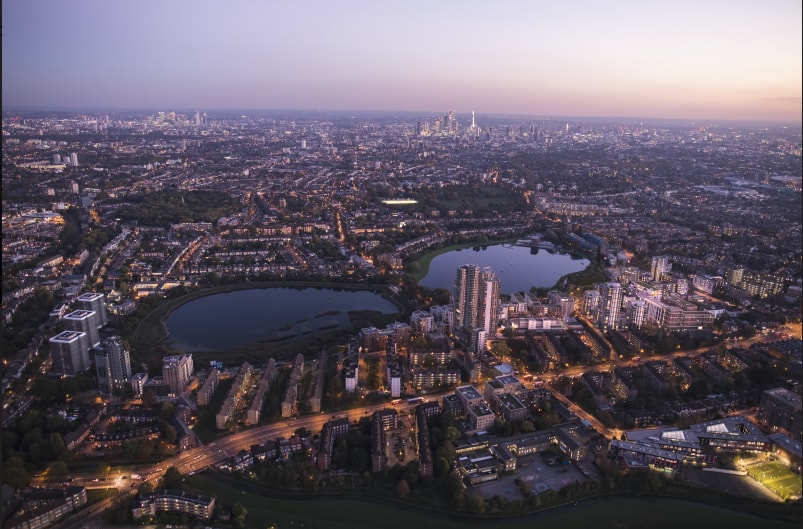
Losing a much-loved tree is never easy, but here’s why it's necessary
The Mayor of Hackney, Philip Glanville, explains why the unfortunate removal of a tree at Woodberry Down is necessary.
After years of engagement with the community, this week, fencing was erected around a tree outside of the Happy Man pub on the Woodberry Down Estate by developer Berkeley Homes. The tree is much loved, but is being taken down as part of plans for the next phase of the regeneration of the estate.
This issue has understandably generated strong emotions on all sides, and many people have contacted me to ask why we are allowing a tree to be cut down when we are one of the most environmentally ambitious councils around.
Let me be clear – this was a last resort, and something that the developer, Berkeley Homes, alongside council officers and local councillors, spent a long time working through with residents to explore every possible option to avoid.
This tree sadly needs to be removed as our partnership builds 584 new homes – including 117 homes for social rent (an increase on previous designs) that are desperately needed for local families, and 126 for shared ownership. It is not being lost for private profit, to enable car parking or luxury apartments or many of the other disingenuous accusations being made.
It’s been identified for removal for more than a decade, since the plans for the regeneration of the estate were first drawn up, and this was set out in the original masterplan for the estate in 2009 – as well as updated and agreed plans in 2014 and 2015. These were subject to extensive public consultation, and no concerns were raised at the time.
Of course, things change. When the stark reality that the tree would need to be removed became clear last year, we held a series of meetings and workshops with elected resident representatives to look at other options for the design of the scheme. We stopped the application from going to our Planning Committee in November, so that we could spend more time evaluating all of the options. And we asked for an independent report to be produced so we could see what the impact of the loss of this tree and the mitigation measures would mean for the biodiversity of the area. This work was extensive and the report demonstrated that the plans would have a net benefit.
To everyone’s disappointment, we could not find a way to avoid removing this tree without huge delays to the construction of desperately needed genuinely affordable homes for social rent, and a complete redesign of the project. Building new homes is never easy, and is full of trade-offs and hard decisions. So while all partners agreed that, sadly, we would need to remove this tree, we worked hard to ensure there would be much greater investment in trees, open spaces and green infrastructure than was initially planned.
That’s why after our intervention, 65 more trees were added to the plans, including seven mature trees and five lime trees, as well as additional rain gardens. All this, alongside a new public park. The scheme, as revised from the collective action of politicians, residents and partners, will increase the number of trees, green space, biodiversity and carbon capture in this part of Woodberry Down.
These updated plans were approved by the Council’s Planning Committee last month, following more than a year of consultation with local people – including dozens of workshops, exhibitions and open days. The designs were agreed by a Design Committee made up of local residents, council officers, and Notting Hill Genesis and Berkeley Homes staff. The planning process looked at all the merits of the tree and mitigations and through an independent process supported the view of the applicant, Berkeley Homes.
In total these new Berkeley Homes plans include the planting of 175 new trees as well as the equivalent of 29 tennis courts of new open spaces, including a new fully public park.
It’s also why there will be 4,135sqm of biodiverse green and brown roofs, including vegetation and planting, as well as an energy centre to provide low-carbon heat for the entire estate and 1,060 new cycle parking spaces.
Already, the regeneration of the estate has seen 425 new trees planted, 50 bird and bat boxes installed and the opening of the fantastic Woodberry Wetlands nature reserve to the public for the first time in nearly 200 years. This huge investment in green infrastructure will benefit generations of local people for long into the future.
This is on top of the other ways we, as a Council, are responding to the climate emergency with Hackney’s biggest ever tree planting programme, with 35,000 new trees across the borough by 2022, including over 5,000 new street trees – as well as switching to 100% clean energy, reallocating roads for green spaces and supporting low-carbon transport.
So while I understand the strength of feeling about the loss of this tree, we’re absolutely committed to meeting social housing needs at Woodberry Down and making Hackney a greener borough – with an ambition that is rarely matched elsewhere.Philip Glanville, Mayor of Hackney
